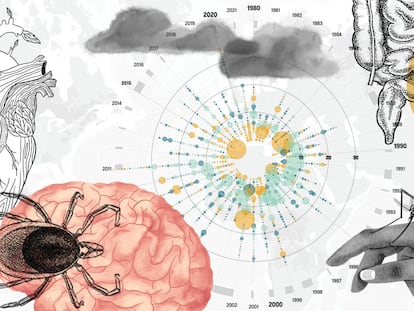Scientists discover why bats hardly ever get cancer
Different studies indicate that the mammals may have genetic and cellular adaptations that protect them against aging processes, viruses and diseases

When we think about bats, we generally associate them with myths, superstitions and — especially since the coronavirus pandemic — their direct or indirect ability to transmit viruses that can cause serious diseases in humans.
Sometimes the animals also bring to mind Batman, a superhero with his own notions of justice in the fight against crime. That’s another (fictional) story, but it is true that bats have extraordinary traits worthy of a Marvel character: they are extremely long-lived for their size, immune to many viruses and, on top of that, they show an enviable resistance to cancer.
Bats as a model in science
Although they are not as common in laboratories as mice or rats, bats have unique characteristics, and the study of these traits allows us to gain knowledge in different scientific fields, which can lead to possible applications in the real world. Thus, and unlike other mammals, bats are able to fly (some species of mammals can glide or slide, but not actively fly). Their flight physiology and biomechanics are areas of interest to researchers studying the evolution of flight in animals of the vertebrate group.
Additionally, bats have the ability to see through sound, a process called echolocation. This interesting phenomenon is the object of neurobiological research into sensory perception. And, of course, bats are essential to our ecosystems as pollinators, and play a very important role in preventing pests. As they are listed as a threatened species, research on bat biology and habitats is crucial for the conservation and maintenance of ecosystems.
Longevity and disease resistance
Surprisingly, some bat species live longer than other mammals of similar size. Most small mammals, such as mice, rats, and hamsters, typically do not live more than three years (not taking into account death from predators). However, many bats can live in the wild for decades, with records spanning over 40 years for some species. Their longevity has been associated, among other aspects, with their ability to hibernate and the fact that they live in caves.
Furthermore, bats show remarkable resistance to certain diseases, including some viruses that are deadly to other mammals. For this reason, these flying mammals have been implicated, but not affected, in emerging zoonotic (transmitted to humans) outbreaks, including the Marburg virus, Nipah virus, and severe acute respiratory syndrome coronavirus 1 (SARS-CoV-1) and 2 (SARS-CoV-2), either through direct human contact or through animals that acted as intermediaries.
Molecular and cellular adaptations
Different studies indicate that bats may have genetic and cellular adaptations that protect them against aging processes, viruses and diseases, including cancer.
Although it is known that bats are not completely immune to cancer, tumors have not yet been reported for the longest-lived species. In this regard, genetic adaptations related to tumor suppression have been described for two of the longest-living species, Myotis brandtii and Myotis myotis, adaptations that could contribute to their extreme longevity.
In addition, improved DNA repair and immunocompetence, stabilization of the microbiota and reduced inflammation and resistance to viruses facilitated by more flexible thermoregulation (related to hibernation) have also been detected in bats. It has also been suggested that their tolerance to many viral infections comes from the unusual features of their innate immune response.
Considering all these adaptations, it is more than evident that bats are a very interesting model to investigate the wide variety of relationships between genotype and phenotype, as well as their clinical implication. For example, if we are able to understand those mechanisms in the immune system of bats that allow them to tolerate viral infections, we could be better prepared to prevent zoonotic outbreaks.
Genomics and evolution to study cancer
But it is also interesting to carry out comparative genomic analyzes between bats and other mammals more susceptible to cancer, since the results may provide clues about the causes of cancer and the connections between cancer and immunity. This, in turn, can help us find solutions to combat it.
To this end, an article published recently in the prestigious journal Genome Biology and Evolution sheds light on a new and complex genomic sequencing methodology in two species of bat: the Jamaican fruit bat (Artibeus jamaicensis) and the Mesoamerican mustached bat (Pteronotus mesoamericanus). The results were compared with those of other mammals (human, mouse, dog, pig, horse and 13 other species of bat).
The research group discovered that one type of interferon (INF-omega) is more common in bats, and that antiviral genes stimulated by type I interferons have also evolved rapidly, with strong selection in favor of the IFIT2 genes (linked to special antiviral activity) and PRDM9 (related to recombination and also involved in responses to infections). These adaptations most likely allow viruses to tolerate viruses without suffering from the disease.
The researchers also found, throughout the evolutionary branch of bats, evidence of positive selection in 33 tumor suppressor genes and six DNA repair genes, which may be associated with the low rates of cancer and longevity observed in these very peculiar mammals.
As Batman says: “Sometimes people deserve to have their faith rewarded.” Let us have faith in science and we will be rewarded.
Francisco José Esteban Ruiz is a Professor of Cellular Biology, University of Jaén.
This article was originally published in The Conversation.
Sign up for our weekly newsletter to get more English-language news coverage from EL PAÍS USA Edition








































